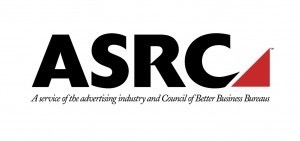By D. John Hendrickson

“What’s in a name?” Well, according to the National Advertising Division of the Council of Better Business Bureaus, truth should be a definite component.
In its decision involving a challenge brought by Unilever United States, Inc. to advertising materials of Colgate Palmolive Company for its Tom’s of Maine “Naturally Dry” Antiperspirant product, NAD has recommended discontinuance of the claim that the product is “naturally dry,” including discontinuance of the claim as used in the product name itself. NAD also recommended discontinuance of additional claims that the product is “natural” and “It really works. Naturally.”
It’s no news to marketers and their legal counsel that “natural” claims are receiving increased scrutiny by regulators and industry, notwithstanding the lack of a uniform definition of the term “natural.” But the above decision drives home the point in a very nuanced manner with far reaching consequences – here, a change to the name of the product as well as the ad copy – that should be a wake-up call to all advertisers.
Unilever argued that, under NAD precedent, products made with ingredients that undergo significant chemical changes cannot be characterized as “natural.” Since the active ingredient in the “Naturally Dry” product is aluminum chlorohydrate, a highly processed, commercially manufactured substance that bears little resemblance to aluminum as found in its original state, it should not qualify as “natural,” according to Unilever.
Colgate, on the other hand, also pointed to NAD precedent in arguing that “natural” should be analyzed by a consideration of: “(a) the origin of the ingredients; (b) how the term “natural” is presented in the context of the challenged advertising; and (c) reasonable consumer expectation as to the meaning of the term” (citing to a prior NAD decision involving Toms’ of Maine Natural Mouthwash). Based on these factors, Tom’s argued that it had not made an express “100%” or “all” natural claim, and that its product “is a more natural alternative” because it contains no artificial fragrances or preservatives and uses recycled aluminum. It additionally argued that the product contains the ingredients visually depicted in the advertising – coconuts, soybeans, safflowers, and olive leafs.
In its analysis of the advertising materials, NAD acknowledged both sets of criteria as presented by the parties and then gave special attention to consumer expectations as influenced by the context in which the product is marketed – thus, going beyond the literal, express claims to examine the implied messaging of the packaging and the ads.
NAD distinguished other cases in which it found adequate support for “natural” claims where most of the ingredients, including all active ingredients, were natural and where the non-natural ingredients comprised only an insignificant portion of the overall ingredient deck (in one cited reference, “approximately 1%”). In contrast, the only active ingredient in this case, which was responsible for the “dryness,” was itself extensively chemically processed – thus rendering the claim “naturally dry” misleading. Further, NAD looked at Tom’s messaging within the antiperspirant product category as compared with other marketers, noting that Tom’s was the only company claiming that its product was “natural” and that no other sellers claimed that aluminum or aluminum salts were natural ingredients. Thus, consumers would understandably differentiate between the products and lend special credence to the “natural” claims of Tom’s.
What about Tom’s argument that it cured any ambiguity in its “natural’ claims by virtue of the ingredient list on the package and accompanying copy leading consumers to its website for the company’s own definition of “natural” and information about its “Stewardship Model?” NAD was not impressed, stating that “consumers should not have to search to learn more about the limitations on any advertising claims. If a claim needs to be qualified to prevent it from being misleading, any disclosure should be clear and conspicuous and found within the four corners of the advertising in which the claim appears.”
What is the take-away from this decision? Marketers need to continually step back and look beyond the well-crafted legal arguments they can compile in support of their product claims to consider how the consumer marketplace is likely to interpret these claims. All too often, the deciding factors are not the express claims by themselves, but rather the express claims as impacted by the context in which they are made – including accompanying advertising claims, visual images, brand positioning, competitor practices and consumer expectations. And all of this takes on heightened importance when the very subject matter of the claims – here, “natural” claims – is one of heightened interest to regulators and competitors.
Legal disclaimer: This article is not intended to constitute legal advice or to create an attorney-client relationship. We trust you knew this anyway.